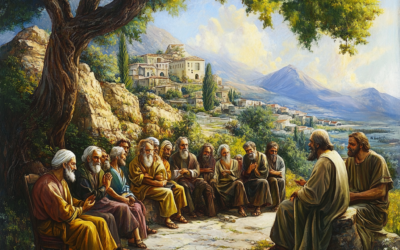Servant Leadership: Flip the Pyramid
The Upside-Down Kingdom
Jesus didn’t whisper when it came to flipping power structures. He flipped tables in the Temple and flipped leadership on its skull. The usual hierarchy, where the big boss barks from the top while everyone else scurries around below, didn’t fly with Him. Instead, He handed us something unexpected: servant leadership. Picture the leadership pyramid standing on its point, the so-called leader holding everyone else up from the bottom.
“But Jesus called them to Himself and said, ‘You know that the rulers of the Gentiles domineer over them, and those in high position exercise authority over them. It is not this way among you, but whoever wants to become prominent among you shall be your servant, and whoever desires to be first among you shall be your slave; just as the Son of Man did not come to be served, but to serve, and to give His life as a ransom for many.'”
Matthew 20:25-28 (NASB)
Translation: Jesus wasn’t handing out titles to anyone with a control habit. He asked His people to lead like He did, with dirty hands and open hearts, not thrones.
Historical Context: Leadership in the Ancient World
Let’s rewind. First-century Rome didn’t hand out leadership awards for kindness. Power came from pressing down, not lifting up. Caesars, governors, tax agents, they climbed the pyramid by stepping on everyone else.
The Jewish religious leaders weren’t much better. They didn’t have Roman force behind them, but they had pride. Pharisees strutted in expensive robes, chased compliments, and grabbed the best seats in the room. Their style was status. Not service.
Then Jesus showed up, looked at the whole mess, and said, “We’re not doing it that way.”
Jesus’ Model of Leadership: Serving, Not Domineering
Jesus didn’t just toss servant leadership around like a slogan. He lived it. Here’s what that looked like:
Washing Feet (John 13:1-17): This wasn’t a warm-up ritual. It was jarring. Washing feet was for servants, not teachers. By doing it Himself, Jesus blew a hole in the idea that leaders avoid the mess. Real leaders kneel. They don’t hover.
Feeding the Multitude (Matthew 14:13-21): When the crowd got hungry, Jesus didn’t wave them off. He used what little they had and made it enough. Leadership means showing up when the resources look laughable and doing something anyway.
“Have this attitude in yourselves, which was also in Christ Jesus, who, as He already existed in the form of God, did not consider equality with God something to be grasped, but emptied Himself by taking the form of a bond-servant and being born in the likeness of men. And being found in appearance as a man, He humbled Himself by becoming obedient to the point of death: death on a cross.”
Philippians 2:5-8 (NASB)
He didn’t skim the surface. He emptied Himself, gave up comfort, and died. That’s not leadership theory. That’s blood and sacrifice.
Biblical Leadership Principles: A Few Key Takeaways
Stick these to your fridge or slap them on a whiteboard:
- Humility Trumps Ego: Jesus wasn’t afraid to get low. Servant leadership starts when you stop thinking you’re more important than the person next to you.
- Empower, Don’t Exploit: Good leaders raise others. They hand over responsibility, celebrate wins that aren’t their own, and give credit instead of grabbing it.
- Lead by Example: Don’t expect others to do what you won’t. If it’s gross, hard, or thankless, roll up your sleeves and go first.
- Sacrifice is Part of the Job: If leadership never drains you, then you’re probably not actually leading. You’re supervising your comfort zone.
Perspectives Across Christianity
This model isn’t optional. It’s core across the traditions:
- Catholic View: The Pope’s title means “Servant of the Servants of God.” He’s supposed to lead by lifting, not controlling. The office exists for the flock, not the other way around.
- Protestant View: Luther’s “priesthood of all believers” took the pastor off the pedestal. Everyone shares the job of serving. Everyone means everyone.
- Evangelical View: You’ll see it in the trenches, small group leaders, volunteers, missionaries. Leadership here looks like scrubbing dishes and loading vans.
Real-World Application: Servant Leadership Today
This isn’t ancient history. It still plays:
- In Business: Chick-fil-A. Southwest Airlines. These companies invest in people, listen to feedback, and put the humans before the spreadsheets.
- In Families: Parents show servant leadership by showing up, giving up, and pouring into their kids without asking for applause.
- In Churches: The pastors who know your name and stack chairs after service, they’re doing it right. It’s not about the mic. It’s about the mop.
The Irony of Servant Leadership
Here’s the twist: the people who give up power end up with more of the good stuff. Trust. Respect. Loyalty. The upside-down pyramid turns out to be stronger than the regular one. It doesn’t collapse from the top—it stands because someone’s holding it from underneath.
And if you ever wonder whether it’s worth the weight, just look at the cross.
Scripture quotations taken from the NASB® New American Standard Bible®, Copyright ©, 2020 by The Lockman Foundation. Used by permission. All rights reserved. lockman.org.









0 Comments